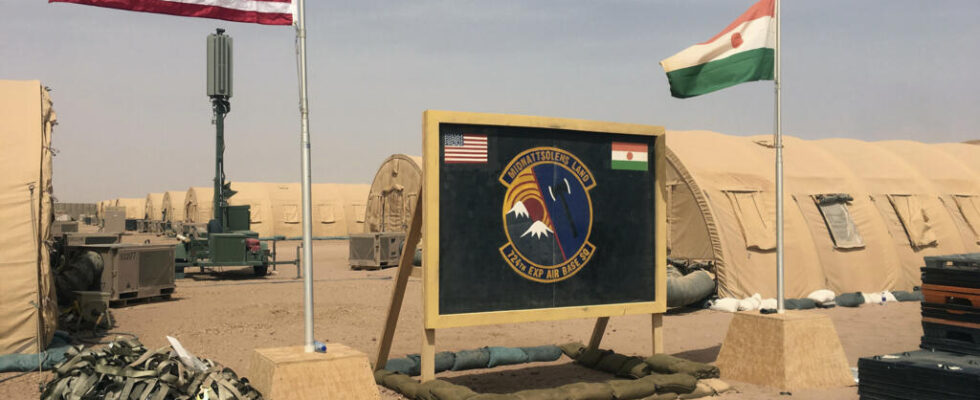This Friday, June 7, a ceremony was organized in Niamey which marks the official start of the withdrawal of American equipment and personnel from Niger. In a joint statement, General Kenneth Ekman of the US Department of Defense and the Chief of Staff of the Nigerien Army, Mamane Sani Kiaou, announced that more than 269 soldiers out of 946 have already left the country as well. than several tons of material. On May 19, the two parties reached an agreement for this withdrawal after the military authorities of Niger denounced the military agreements with Washington.
2 mins
On the tarmac of the airport of military base 101 in Niamey, a large C-130 plane is placed on the runway. It must accommodate on board equipment, tanks and 4x4s, but above all soldiers who will definitively leave the Niger. It is this aircraft or a similar model which will carry out the various rotations in the days and weeks to come so that the American disengagement from the country is effective.
In his speech, Mamane Sani Kiaou, the army chief of staff, affirmed that the protection and security of American troops would be a priority. The agreement between Washington and Niamey provides for overflight and landing authorizations, but also for organizing land convoys between the different American positions in Niger.
Joint Statement from the US Department of Defense and the Department of National Defense of the Republic of Nigerhttps://t.co/VSdWe3y2F2
— US Africa Command (AFRICOM) (@USAfricaCommand) June 8, 2024
Read alsoNiger: threats from Washington caused the end of military agreements, according to the Prime Minister
More than 100 million dollars invested in Agadez
There are still soldiers stationed in the towns of Oulam, Diffa, and especially at the Agadez base, located nearly 1,000 kilometers from the capital Niamey from where large aircraft can depart. As of 2016, more than $100 million had been invested to equip the Agadez 201 drone base. A new runway, hangar and buildings to house the soldiers were constructed. Even if no public communication has been made on the subject, these infrastructures should logically be returned to Niger. For sensitive equipment, namely work computers, vehicles and weapons, they are part of the equipment that will be returned to the UNITED STATES or will be used in other theaters of operation.
It is therefore an immense logistical challenge that awaits American troops. In a little over three months, all of the contingents should have left Niger. A reinforcement of American personnel has also been announced to accelerate the withdrawal process and meet the deadline of September 15, 2014 for total disengagement.
Despite the end of their military collaboration, Niamey and Washington are committed to continuing their cooperation in other areas. A new agreement between Niger and the American development agency USAID is expected in the coming weeks.
Read alsoNiger: Niamey and Washington reach an agreement for an American withdrawal by mid-September
